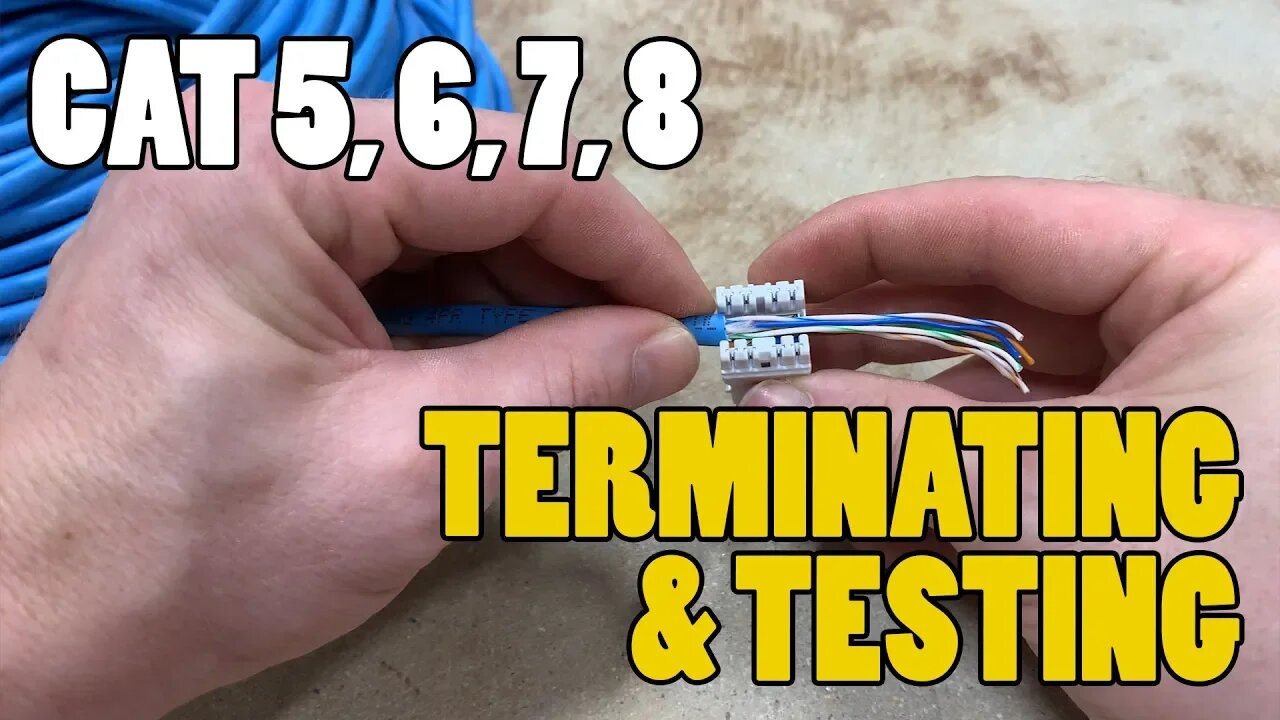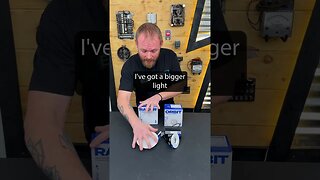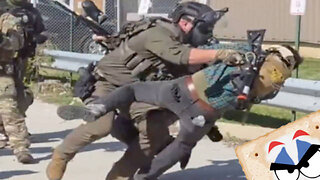Premium Only Content

Terminating/Testing Network Cables - CAT 3, CAT5, CAT6, CAT 7, CAT 8
Punching down and testing cat5 cables is something that a lot of people struggle with understanding so today I'm going to talk about what the various category cables are, how to decide if you need A or B configuration, and how to check your terminations with a tester when you're done.
👾🤖PRACTICE EXAMS🤖👾
https://www.electricianu.com/practice-exams
😎👕MERCH👕😎
https://www.electricianu.com/merchandise
📲👥SOCIALS👥📲
Instagram - https://www.instagram.com/electrician_u
Discord - https://discord.gg/7ykYfbh
Facebook Page - https://www.facebook.com/theelectricianu
Facebook Group - https://bit.ly/2tz7eQh
TikTok - https://www.tiktok.com/@electricianu
SPONSOR
ROGERS - https://www.rogersservices.com
Category 5 cable is probably the most commonly know network cable. It's only one of the many kinds out there, however. There are others like Category 3, Cat 5, Cat 5e, Cat 6, Cat 6a, Cat 7, and even the new Cat 8. Category cables are simply twisted pair cable assemblies that have 4 pairs of conductors - 8 total wires inside. Each pair is color-coded to allow the installer to see which pairs they're dealing with when making terminations.
The colors for terminating are made up of 4 solid colored conductors, and 4 striped. Each solid has a matching color striped conductor that it is twisted together with inside of the jacketing.
Each pair has a specific purpose in how they send and receive signals, and when punching down keystone jacks and crimping RJ45 connectors you need to know the order they're supposed to go to ensure the cables work correctly.
568A or 568B?
Every termination we do nowadays has two options for how the wires can be ordered. The old way of wiring was using the T568A configuration. These days most people use the T568B configuration, and there's a reason for it.
A straight-through cable will have one configuration on both ends of the cable. This means that on one side you'll have A, and the other you'll have A. This allows information to be passed "straight through" the cable for devices that are DIFFERENT than one-another. If you wire for configuration B, the same is true. The reason there are 2 configurations is that there is a type of network cable called a "crossover cable" that needs to be able to be visibly recognized when looking at it. This type of cable has ONE side using an A configuration, while the other has a B configuration. This allows two SIMILAR devices to speak to each other, and listen to each other at the same time.
If you try to use a crossover cable for 2 different devices it will not work, and if you try to use a straight-through cable for 2 similar devices it will not work. Each has their purpose. However, whether or not you use A or B configuration, your cables will still work if you make sure both ends are the same. Crossover cables are very rare and are used specifically by people who know why they're using them. For the average person, wiring a cable with both ends as A, while hooking up to a network that is wired in B is ok. All of the pins will still line up allowing different devices to communicate. It's only a problem when the pins differ on both ends or are punched down/terminated incorrectly.
TERMINATING RJ45 CONNECTORS
An RJ45 connector is the "male" end of a cable that plugs into the "female" keystone jack. An RJ45 has 8 metal pins that pierce the sheathing of the 8 individual wires in the CAT cable assembly. These pins have a specific order that must be followed to ensure they transmit and receive data, otherwise, they won't work or they'll short-out your equipment.
Strip out about 3 inches of jacketing at the end of the cable. Cut off any plastic insulation, or fibers that come on the inside of the cable. Next untwist all of the pairs and straighten them out using something solid. I drag the edge of my strippers down each conductor to remove the curls in each one. Then line each conductor up in either the A or B configuration from LEFT TO RIGHT as they emerge from the jacketing. Next, take your RJ45 connector and measure out how much of the conductors you need, and cut off the excess. You should only need roughly 1/2-inch to 3/8-inch of conductors sticking out of the jacketing.
CONTINUE READING FULL ARTICLE AT: https://www.electricianu.com/podcast/terminating-testing-network-cables-cat-3-cat5-cat6-cat-7-cat-8
#cat5 #rj45 #keystone #networkcable
--
Subscribe - https://www.youtube.com/c/electricianu?sub_confirmation=1
IF YOU ENJOY THESE VIDEOS PLEASE SUBSCRIBE AND "LIKE" THEM ABOVE. ALSO CHECK OUT THE ELECTRICIAN U PODCAST ON ITUNES AND SPOTIFY!!
-
 0:50
0:50
Electrician U
1 year agoWhat Are Lumens?
13.1K4 -
 15:57
15:57
Robbi On The Record
1 day ago $1.00 earnedTranshumanism: Are Humans Becoming Obsolete? Neuralink & CRISPR explained
14.4K8 -
 2:22:21
2:22:21
TheSaltyCracker
4 hours agoICE Smashing Antifa ReeEEStream 9-26-25
83K123 -
 LIVE
LIVE
SpartakusLIVE
5 hours ago#1 HERO of the PEOPLE || Ending the Week with FUN, WINS, and LAUGHS
425 watching -
 LIVE
LIVE
SynthTrax & DJ Cheezus Livestreams
15 hours agoFriday Night Synthwave 80s 90s Electronica and more DJ MIX Livestream THE FLOATING WORLD / Variety Music Edition
173 watching -
 LIVE
LIVE
Eternal_Spartan
11 hours ago🟢 Eternal Spartan Plays Destiny 2 | FPS Friday | | USMC Veteran
155 watching -
 2:04:11
2:04:11
MattMorseTV
5 hours ago $1.31 earned🔴The UK just hit ROCK BOTTOM.🔴
46.5K125 -
 LIVE
LIVE
iCheapshot
3 hours ago $0.04 earnedBack From Vacation! | Checking Out Skate Maybe Some Boarderlands 4
239 watching -
 LIVE
LIVE
Jorba4
2 hours ago🔴Live-Jorba4- Borderlands w/ The TRIBE
97 watching -
 54:43
54:43
Glenn Greenwald
6 hours agoGlenn Reacts to Netanyahu's UN Speech; PLUS: Q&A on Trump's Russia/Ukraine Policy, the Tom Homan Investigation, and More | SYSTEM UPDATE #522
72.9K41